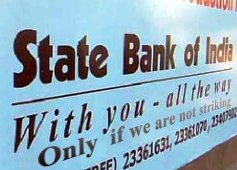 Four days ahead of RBI’s monetary policy review, SBI Chairman Pratip Chaudhuri says a cut of one percentage point in CRR will allow the bank to lower lending rates 20 basis points.
Four days ahead of RBI’s monetary policy review, SBI Chairman Pratip Chaudhuri says a cut of one percentage point in CRR will allow the bank to lower lending rates 20 basis points.
He tells Manojit Saha why a repo rate cut is meaningless and why SBI plans to stop giving performance guarantees to traders and contractors for road projects.
Edited excerpts:
SBI’s 21 per cent loan growth last financial year was higher than the industry average. What will be your growth strategy in the next six months?
Growth in the first half is always slow, particularly from the corporate side.
So the emphasis will be on retail, mainly on home loans.
Our home loan processing capabilities have improved vastly and the increased number of tie-ups with builders have helped.
In the next six months, the focus will also be on increasing the physical strength.
We tried to open 1,200 additional branches but opened only about 750.
We did massive recruitment in November-December and added 20,000 people.
In the next six months, we plan to open 600-700 branches. We expect 25-30 per cent growth in home loans.
This is a de-risked model, and our loan-to-value ratio is 70 per cent, so it does not consume a lot of capital.
What’s the strategy for large firms?
Our large corporate book grew 32 per cent last year to Rs 1.65 lakh crore (Rs 1.65 trillion).
The non-performing assets in this sector were close to one per cent. Our loans are mostly secured.
When firms have unleveraged fixed assets, we have encouraged them to come for loan.
SBI expected healthy recovery in Q4? Was that achieved?
Our March-end NPA should be lower than that in December.
There has been a good cash recovery, including that from written-off accounts.
That income adds to the bottom line.
Last year, recovery from written-off accounts had risen to Rs 1,000 crore (Rs 10 billion), compared with Rs 700 crore (Rs 7 billion) the previous year.
The one business we might withdraw from is giving a performance guarantee to traders and contractors undertaking projects for state governments.
NHAI is not getting paid on time.
There are disruptions in these projects.
The underlying asset structure is also relatively weak.
The risk of default on such guarantees has become more pronounced.
Road projects need a repayment cycle to start from a certain date.
If the toll collection does not happen on schedule, RBI calls those restructured assets.
This increases the provisioning requirement.












 © 2025
© 2025